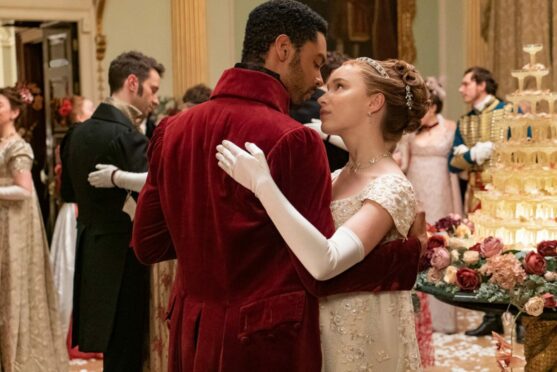
Last year, hit Netflix drama Bridgerton ignited passions for Regency-era parties and celebrations.
To help you bring in the bells like an 1800s lady or gentleman, author Amy Finley, who writes as Lady Thornwood, tells Alice Hinds the Honest Truth about society soirees.
Has Bridgerton led to a surge in interest for Regency era socialising?
Most definitely! Bridgerton captures every sumptuous, scintillating detail of a Regency fete, from ballroom galas to high-society park picnics.
It is a positively delightful and decadent era, and blissfully romantic. And yet accessible!
One can create the ambience with a few candles, some lovely linen, a filmy gown, perhaps a little brocade or velvet… and some wicked gossip served over luscious cocktails.
Did party guests judge their host on what drinks were served at social gatherings?
No detail escaped the attention of the acquisitive Regency guest, thirsty for insight into the social standing of their host, so the drinks on offer were certainly scrutinised. Was one’s brandy of the best quality, or only middling? Were drinks poured generously, or with hedging parsimony?
The more variety of spirits and liqueurs on display, the more worldly and sophisticated one’s host. That went for citrus fruits, too, which advertised one’s income in a most elegant manner.
Given the alacrity with which tales spread after a soiree, one could nudge up one’s position if one made a lavish enough impression. However, should one trample upon the dictates of good taste, one could find oneself the object of ridicule. One’s standing was proven by one’s ability to teeter just on the edge of propriety – dashing and daring, never unseemly or vulgar.
Was it socially acceptable for young women to drink – and, indeed, get drunk?
Women could and did certainly drink at social occasions, particularly in the company of other women.
But drunkenness could permanently tarnish one’s reputation. One’s reputation was one’s currency. Perhaps that is why it is so satisfying to throw a Regency fete today: keep all the sumptuousness, banish the prejudice and inequality.
What spices and ingredients were particularly popular?
Ice is so commonplace now, it is hard to imagine what an extravagance it was in the Regency, so an icy cold cocktail was the absolute height of luxury.
Citrus was also very glamorous, as were spices and exotic flavourings such as ginger, cinnamon, cloves, allspice, and nutmeg.
Many of the warm flavours we associate with Christmas and the holiday season, actually. There is a reason we associate these tastes with celebration!
During the Regency, these were coveted trade goods, available at the markets but very pricey.
And pineapple! Goodness. Nothing was more worldly than a pineapple.
Did behaviour in Gentlemen’s Clubs betray the prim and proper manners we associate with the wealthy of the era?
Behind closed doors, a gentleman wasn’t held to the same standards as one would exhibit in polite company.
The point of the Club was its exclusivity, an unspoken contract among wealthy men to look the other way. We use the word “privilege” for a reason.
What would be served to toast the New Year in the 1800s?
If one was wealthy, at the minimum, a simple glass of Champagne. But to really ring in the New Year, one should toast with a cocktail. Which is why Lady Thornwood recommends a whole slew of sparkling cocktails enlivened with a splash of bubbly.
When one is adding Champagne to a cocktail, one should add just enough – about 45 to 90ml – so the drink rises to the rim of the glass. One of my favourites is the Trading Up, which has dry vermouth, herbaceous Benedictine, honey-sweet Drambuie, a little lemon, and Champagne.
Finallly, how would Regency party-goers cure a hangover?
Rest, a cold compress upon one’s forehead, and a nip of the proverbial “hair of the dog.”
Lady Thornwood recommends the Sordid Tale – at minimum made with tomato juice, hot sauce, and Worcestershire sauce, spiked with gin. It resettles the constitution most admirably.
The Regency Book Of Drinks: Quaffs, Quips, Tipples, And Tales From Grosvenor Square by Lady Thornwood (Abrams, £17.99)

Enjoy the convenience of having The Sunday Post delivered as a digital ePaper straight to your smartphone, tablet or computer.
Subscribe for only £5.49 a month and enjoy all the benefits of the printed paper as a digital replica.
Subscribe © SYSTEM
© SYSTEM